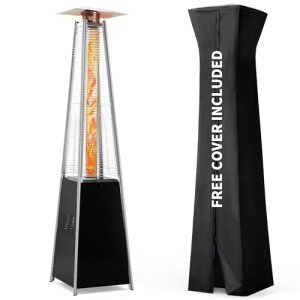10 Myths Your Boss Has Regarding Outdoor Stoves Online
Best Value Fireplaces: An In-Depth Guide
The fireplace has long been concerned as the heart of a home, offering heat, ambiance, and a focal point for celebrations. Nevertheless, navigating through numerous alternatives can be frustrating, specifically with budget restrictions in mind. This short article presents an informative guide on the best value fireplaces, detailing their types, functions, and advantages to assist property owners make a smart option.
Types of Fireplaces
Fireplaces can be found in a variety of styles and types, each with various characteristics, costs, and advantages. Here's a detailed appearance at the most common kinds of fireplaces readily available in the market today.
Type of Fireplace
Description
Typical Cost
Pros
Cons
Wood-Burning
Burn logs to develop heat and atmosphere.
₤ 1,500 – ₤ 5,000
Authentic experience, natural heat
Needs regular upkeep, less efficient
Gas Fireplaces
Utilizes gas or propane to produce heat.
₤ 2,000 – ₤ 5,000
Easy to use, cleaner than wood
Minimal to gas supply, installation costs
Electric Fireplaces
Imitates flames with LED innovation and produces heat through electricity.
₤ 200 – ₤ 3,000
Easy setup, setup flexibility
Less authentic feel, higher operating expense
Pellet Stoves
Use compressed wood or biomass pellets, providing an environmentally friendly choice.
₤ 3,000 – ₤ 4,500
Efficient, low emissions
Needs electricity to operate, requires storage for pellets
Ethanol Fireplaces
Burns ethanol fuel, producing flames that do not need a chimney.
₤ 300 – ₤ 2,500
No vents needed, portable
Higher fuel cost, safety issues
Aspects to Consider When Choosing a Fireplace
Picking the ideal fireplace is not almost aesthetic appeals; it likewise includes useful considerations. Here are important aspects to bear in mind:
1. Spending plan
- Identify how much you want to invest. Keep in mind that setup and upkeep expenses can add up.
2. Area and Size
- Guarantee the fireplace fits well within the space, thinking about both the area available and the heating requirements.
3. Fuel Type
- Choose the fuel source based upon availability, expense, and the kind of ambiance you want to achieve.
4. Efficiency
- Decide for systems with high-efficiency rankings to ensure you are getting the most value for your money in regards to heat output.
5. Visual Appeal
- Select a design and design that complements existing design and boosts the general appeal of the area.
6. Regulations
- Know regional guidelines, allows, and structure codes that may impact your fireplace setup.
Top Best Value Fireplaces
Based on client reviews, professional opinions, and overall value for money, here are a few of the very best value fireplaces presently offered in the market:
1. DuraVent Pellet Stove
- Type: Pellet
- Average Cost: ₤ 2,000
- Highlights: Highly efficient with low emissions, making it an outstanding choice for environmentally-conscious homeowners.
2. Napoleon B36NTR-1
- Type: Gas
- Typical Cost: ₤ 2,500
- Emphasizes: This fireplace is aesthetically attractive and extremely efficient, with a streamlined design and adjustable flame.
3. Duraflame Electric Heater Stove
- Type: Electric
- Average Cost: ₤ 200
- Emphasizes: Affordable and portable, perfect for smaller sized areas or adding atmosphere to a space without long-term installation.
4. Genuine Flame Juliet Gel Fireplace
- Type: Ethanol
- Average Cost: ₤ 300
- Highlights: A stylish alternative for modern areas that needs no venting, making it versatile and simple to install.
5. Vogelzang VG5790
- Type: Wood-Burning
- Average Cost: ₤ 800
- Emphasizes: Offers a traditional wood-burning experience with a sleek modern style, perfect for those who value the classic ambiance.
Often Asked Questions (FAQs)
Q1: What is the most affordable fireplace alternative?
A1: Electric fireplaces tend to be the most cost-effective in regards to preliminary purchase price and setup, but can have higher operating costs compared to gas or pellet systems.
Q2: Are gas fireplaces much safer than wood-burning fireplaces?
A2: Yes, gas fireplaces generally produce fewer emissions and pose a lower risk of chimney fires as they do not produce creosote like wood-burning units.
Q3: Can I set up a fireplace myself?
A3: While some electric fireplaces permit easy self-installation, other types, particularly gas and wood-burning designs, normally require expert setup due to venting and security concerns.
Q4: How do I keep my fireplace?
A4: Regular maintenance includes cleaning the chimney (for wood-burning fireplaces), looking for gas leakages (in gas units), and guaranteeing appropriate ventilation for electric designs.
Q5: Is an ethanol fireplace a great choice?
A5: Ethanol fireplaces are appealing for their modern design and ease of setup. However, they can be less efficient and more expensive to run long-term compared to other fuel types.
Selecting a value fireplace that satisfies your visual preferences and useful needs involves comprehensive research study and factor to consider. By understanding Minimalist Fireplaces of fireplaces, their associated expenses, and advantages, house owners can make informed choices that will not only fit their budget plan but also improve the warm and inviting environment of their homes. Whether selecting an electric, gas, wood-burning, pellet, or ethanol design, the ideal fireplace waits for to change your home.
